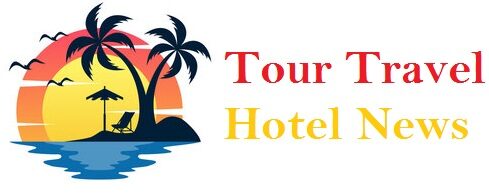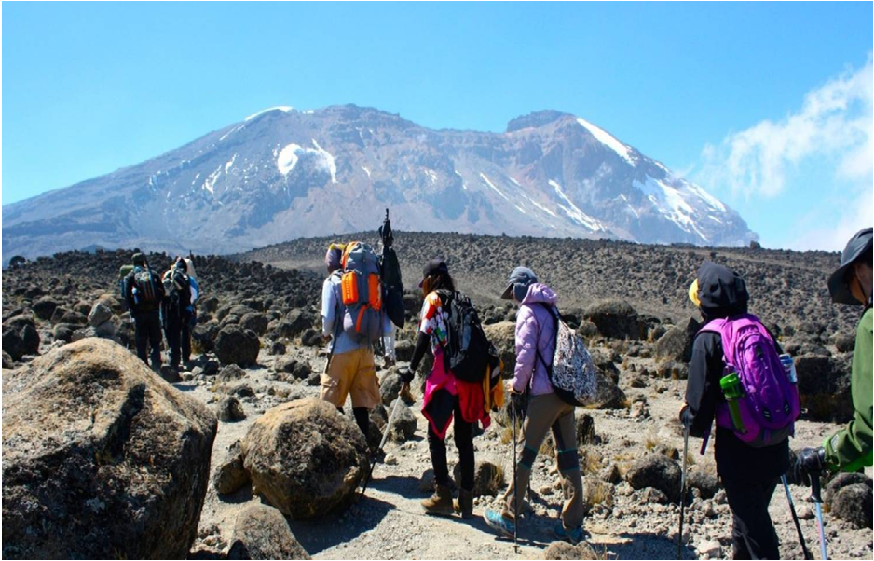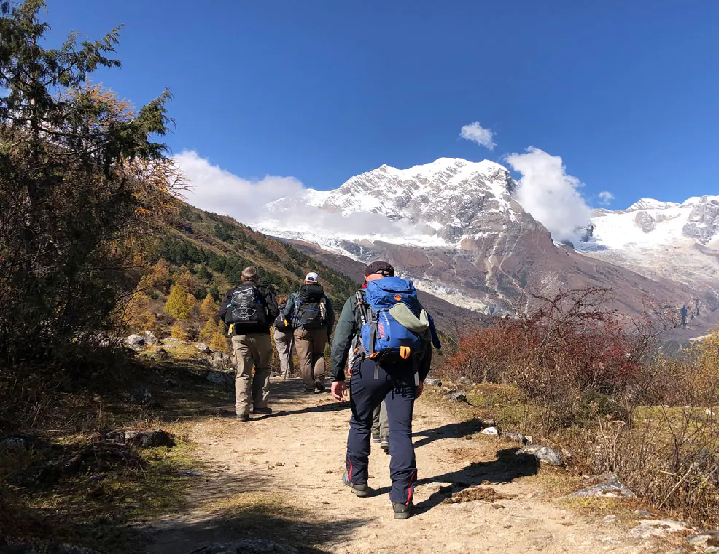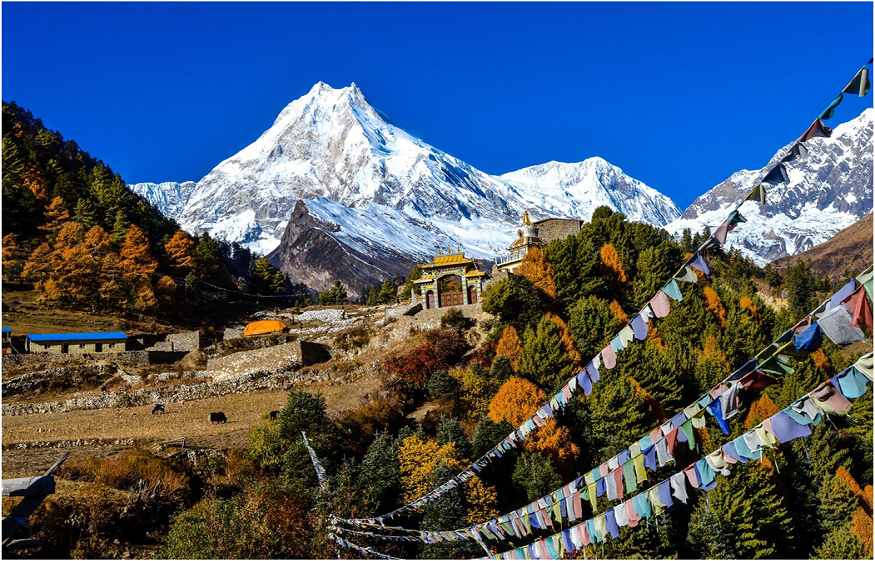Your Cost to Climb Kilimanjaro varies between USD 2000 and USD 6000 or more. These overall costs will vary depending on your tour operator, the route you take, and additional activities.
With a bit of pre-climb planning and organization, you can afford to climb the peak of Africa. Here’s a detailed blog to tell you about the Kilimanjaro Climb Cost and help you prepare for the adventure of your lifetime.
I) Understanding the Kilimanjaro Climb Costs
Climbing Kilimanjaro involves several costs, from mandatory park fees to staff wages and equipment expenses. Here’s a detailed breakdown of the various factors affecting the Kilimanjaro climb cost:
- Park Fees
Kilimanjaro National Park charges various fees for both visitors and crew. These are mandatory costs that all operators include in their packages:
- Conservation Fees: USD 70 per person per day.
- Camping Fees: USD 50 to USD 60 per night.
- Rescue Fees: USD 20 per person per trip.
- Guide and Porter Entrance Fees: USD 2 per staff member.
- Taxes & VAT: 18% on all services.
These fees can easily total USD 160-200 per person per night, significantly contributing to the Mount Kilimanjaro climb cost.
- Staff Wages
A good operator ensures fair wages for all staff involved:
- Guides: USD 20-30 per day.
- Porters: USD 10-15 per day.
- Cooks: USD 15-20 per day.
Each climber typically requires 3-4 porters, directly affecting the Total Cost to Climb Kilimanjaro.
- Food and Transportation Costs
Food and transportation are essential aspects of any Kilimanjaro Climb.
- Food: USD 10-20 per person per day, including staff.
- Transportation: USD 100 per trip, depending on the Kilimanjaro Climbing Route.
Quality food ensures climbers are energized and motivated, which is crucial for a successful climb.
- Equipment and Gear Costs
Equipment and gear are crucial for safety and comfort during the climb. Hence, operators must provide and maintain high-quality Kilimanjaro Climbing Gear to ensure climbers are well-prepared for the journey. Below are some of the essential items:
- Four-season tents and dining tents.
- Toilet tents and portable toilets.
- Emergency oxygen and medical kits.
Maintaining and replacing gear impacts the average cost of climbing Kilimanjaro.
- Route Selection and Duration
Choosing the right Kilimanjaro Climbing Route and duration is important for a successful climb. Each route offers a unique experience and varying costs, depending on the number of days required. Here are some of the popular options:
| Route | Duration | Cost (USD) |
| Lemosho Route | 7-8 days | 2850-2980 |
| Machame Route | 6-8 days | 2790 |
| Northern Circuit | 9-10 days | 3280 |
| Marangu Route | 6 days | 2670 |
| Rongai Route | 7 days | 2850 |
Longer routes, with more days on the mountain, increase acclimatization chances and offer better summit success rates. However, they also raise the Climbing Kilimanjaro Cost.
II) Additional Costs and Tips
Aside from the primary climbing costs, there are additional expenses to consider when planning your Kilimanjaro Climb. Here’s a breakdown:
- Gear and Equipment Rentals
Investing in the right gear is vital,but it can be expensive if you’re starting from scratch. Renting items like down jackets and sleeping bags can save you money.
- Rental Savings: Renting can save on costs for items like down jackets and sleeping bags.
- Budget: USD 500-800 for quality trekking gear.
- International Flights and Visas
Flights and visas are unavoidable expenses. To save on flights, booking in advance is advisable. While the cost of flights will vary depending on the region you are travelling from, the cost of a Tanzania Visa for most overseas visitors is around USD 50.
- Health and Safety Expenses
Before climbing Kilimanjaro, ensure you’re prepared with the necessary vaccinations and insurance coverage. Travellers must have a yellow fever certificate, and the cost of vaccinations varies by region. Additionally, travel insurance covering trekking up to 6000m is essential and usually costs USD 50-100. These precautions ensure a safer and more secure climb.
- Tips and Crew Appreciation
Tipping is a customary way to show appreciation for your crew’s hard work. The recommended tips are USD 20 per guide per day and USD 10 per porter per day. Additionally, gifts like old clothing or gear are always appreciated. Showing gratitude helps recognize the team’s dedication and ensures a positive experience for future climbers.
- Incidentals Before and After the Climb
Before and after ascending Kilimanjaro, consider additional expenses such as accommodation, meals, and souvenirs. Budgeting for extra nights at a cost ranging from USD 100 to 200 per night is advisable. Moreover, factor in varying expenses for meals and souvenirs, which can contribute significantly to your overall budget. Planning for these incidentals ensures comprehensive financial preparation for your Kilimanjaro Climb.
III) Cost Breakdown for Climbing Kilimanjaro
The belowtable provides an overview of the various expenses you might encounter when planning a climb up Kilimanjaro. From park fees to gear rental and vaccinations, each Climbing Kilimanjaro Costs category is detailed to help you prepare financially for your adventure.
| Expense | Cost (USD) |
| Park Fees | USD 70 per day |
| Camping Fees | USD 50-60 per night |
| Rescue Fees | USD 20 per person per trip |
| Guide Fees | USD 20-30 per day |
| Porter Fees | USD 10-15 per day |
| Cook Fees | USD 15-20 per day |
| Food | USD 10-20 per day |
| Transportation | USD 100 per trip |
| Tips | USD 10-20 per guide/porter |
| Gear Rental | USD 500-800 total |
| Travel Insurance | USD 50-100 total |
| Visas | USD 50 |
| Vaccinations | USD 100-200 total |
| Extra Accommodation | USD 100-200 per night |
Plan Wisely for an Affordable Kilimanjaro Climb
As we have seen from the above blog, the Climbing Kilimanjaro Cost varies greatly. However, understanding the breakdown helps you plan effectively. With careful budgeting and a reputable operator by your side, you can climb Kilimanjaro on a budget while having a never-before-seen experience. Take the time to research, plan, and choose the best options for your journey to the top of Africa.




